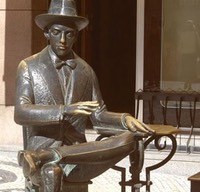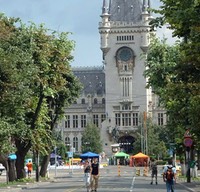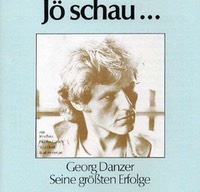Essay
A Hamlet in Poland
By Christopher Lawson
THE SILESIAN QUARTO AND ELIZABETH OF BOHEMIA
Posted: 29/07/2015
Of the seven extant quartos of Hamlet, the only one not in a library in the USA or the UK is to be found in the university library of Wroclaw. In the 17th century Wroclaw was, of course, called Breslau or Presslaw. The Czechs knew it as Wratislaw. So how did a copy of Shakespeare’s classic text get to far-flung Poland?
It formed part of the huge collection of books amassed by Thomas Rehdiger (1540-1576). Rehdiger studied in both Wittenberg and Padua and adopted a peripatetic life wandering between northern Italy and the Low Countries. He rarely returned to his birthplace. Since he died 12 years after Shakespeare was born he cannot himself have acquired the quarto. Rehdiger bequeathed his collections of coins and books to Presslaw, specifying that the books be displayed for public use. There were 300 volumes of documents and 6000 books. It took five years to be transported from Cologne. Repeatedly delayed by administrative quarrels, it finally opened in 1661, 85 years after its founder’s death.
The story of what has come to be called the Silesian quarto is closely intertwined with the life of Elizabeth of Bohemia, only daughter of James I of England, her spectacular marriage to Frederick Palatinate, her flight from Prague to the Hague at the start of the Thirty Years’ War, her long years of exile in the Netherlands, her love of the theatre, especially the masque, and her skill as a horsewoman and a hunter. She was the crucial link between the Stuart kings and the House of Hanover. Elizabeth was, successively, a royal princess in Linlithgow, then in London, an adored bride in Heidelberg, a Queen Consort in Prague, an impoverished exile in The Hague and finally the respected aunt of Charles II in Restoration London. She lost both her brothers, Prince Henry to typhoid fever in 1612 when he was 18 and Charles at the age of 48 to the executioner’s axe in 1649. The loss of Charles was a double blow as he was one of a small number who helped to fund her long years of exile.
OTAKAR VOCADLO
We need to begin with the great Czech academic Otakar Vocadlo, who first established that Elizabeth was the original owner of the Silesian quarto, as it has come to be known.
Vocadlo, one of the heroes, indeed titans, of Shakespeare scholarship in Central Europe, taught Czech language and literature at the Department of Slavonic Studies and King’s College London from 1922 to 1929. He took his Ph.D. at University College London. He survived Terezin, Auschwitz and Buchenwald. Indeed, he asked his colleague Professor A. Frinta to inspect the Silesian quarto during his stay in Poland in 1965 as Vocadlo was loath to revive “unpleasant memories of 1943” when he was driven chained through the streets, to be thrown into a “filthy vermin-infested underground cell” to await transportation to Auschwitz. Professor of English literature in Bratislava and Charles University in Prague, he was twice removed from his Professorship by the Nazis, was rehabilitated during the Prague Spring of 1968 and dismissed again within a year. He was brought to King’s College Cambridge in 1945, 1947 and 1964. His biography states: “He published on Capek, Shakespeare and the Czech reception of English literature.”
In the 1920s one of his finest moments came when he organized a visit to England for Karel Capek, the most important Czech writer of the last century. Capek met G.B. Shaw, H.G. Wells, Galsworthy, G.K. Chesterton and even the Romanian Queen Marie as well as Arnold Bennett and Desmond MacCarthy. Capek especially loved English trees, lawns and parks but took his distance from the overcrowded streets.
As Breslau became Wroclaw after the Second World War, the new Professor of English, Professor Juliusz Krzyzanowski, a secondary school teacher before the war, happened on the copy in 1950. Alas, he was to die that same year and the find was forgotten.
THE WEDDING OF ELIZABETH OF BOHEMIA AND FREDERICK PALATINATE
Let us now go back to the 17th century and establish Elizabeth’s love of the theatre, and especially of Shakespeare, her favourite playwright, and the masque. A true masque must end with dancing in which both masquers and audience participate and it commonly contained an elaborate allegorical message as well as a fulsome tribute to the royal person presiding. We may be sure that Elizabeth was an enthusiastic participant.
For three months before her wedding on St Valentine’s Day 1613, 20 plays were performed. Eight of them were by Shakespeare. The King’s Men received 155 pounds six shillings and eightpence for their work. The wedding had been postponed because of the death of her much-loved brother Prince Henry.
Among these were the Tempest and the Winter’s Tale. The surviving texts were long claimed to have been revisions reflecting the marriage. The betrothal masque in the Tempest, however, is unlikely to have been an addition. As for the Bohemian setting of the Winters Tale, Prince Frederick had no Bohemian connection whatever in 1613. Frederick and Elizabeth, the bride and groom, were both 16 years old at the time of the wedding. Elizabeth’s subsequent career reflects King Lear more than the Tempest. After her Protestant husband accepted the Bohemian throne and then lost it to Catholic invaders. James, fearing popular support for a militant reassertion of the claim, forbade her or her family from ever entering his realms. Elizabeth returned to England from her exile in the Netherlands only in the last year of her life, 1662.
After this Shakespeare made his first known purchase of any property in London. He bought an apartment in the Blackfriars Gatehouse. His star tragic actor Richard Burbage did the same. The apartment was conveniently close to the Blackfriars payhouse. The purchase suggests that, three years before his death, Shakespeare intended to continue visiting London well into the future.
Some commentators have suggested that Shakespeare himself was brought out of retirement to supervise the performances, but we should beware of “might have beens”. We shall never know.
Elizabeth had many suitors. In the end her parents settled on Frederick of the Palatinate. He was the leader of the association of Protestant princes in the Holy Roman Empire known as the Protestant Union (http://en.wikipedia.org/wiki/Protestant_Union), and Elizabeth was married to him in an effort to increase James's ties to these princes.
The wedding, lavish and spectacular, strengthened the Protestant movement in Europe: it was a statement of England's foreign policy under the reign of James I.
The wedding eventually bankrupted the royal treasury Poems were created, music was written, nightly bonfires were lit, and costly gifts were presented.
Crowds had swarmed to London from all corners of the kingdom. Crowds gathered, eager for three days of fireworks, revelry, and grandest of all, the staged sea battles of the Venetians beating the Turks at Algiers.
A mock town had been raised on the banks of the Thames, opposite Whitehall Palace. Thirty-six sea vessels were created for two events, 500 rivermen and 1000 musketeers were requisitioned, with four floating castles to house the fireworks.
With the royals watching from Whitehall Palace windows, the first performance, a fireworks extravaganza, began. Thirty-six cannonballs of fire shot up in the air and exploded, descending as thousands of tiny fiery balls of rain. St. George stood with his lance, a young Amazon maiden, and an immense dragon.
For half an hour St. George and the dragon hurled fire at each other as the maiden gazed on awaiting rescue, until the dragon exploded in flame. St. George and the maiden then also caught fire and were slowly consumed by flames, their remains sinking into the river.
When the smoke cleared, a fiery comet burst forth from the waters which transformed into a grand finale of a burning stag being pursued by hunters and dogs of fire across the sky.
Two days later, on the wedding eve, the river show began again with the siege: seventeen "Turkish Galleys" sailed up the river to bombard the mock town. Guns were shot, and hundreds of cannons were blasted.
For their troubles, 'unacceptable amounts' of the amateur cast of rivermen and musketeers lost their fingers, hands, or an eye or two in these wedding eve celebrations.
The Princess was wearing a gown of silver cloth, richly embroidered with mythological creatures, crosses, and other symbols. Her crown was of gold, encrusted with diamonds and pearls, with pendants of more diamonds and pearls cascading down her back to her waist.
The Prince Palatine, who had entered first, wore silver as well, embroidered with gold and diamonds. He was crowned with a plumed hat that was looped with strands of diamonds.
At this point the royal exchequer was empty. King James had to make bargains with the nobility who had been promised repayment
All further expected celebratory events were abruptly cancelled, King James himself left London to save face and headed for his newly built palace at Newmarket.
I describe the wedding in some detail to contrast the riches Elizabeth enjoyed in England with the relative austerity of her years of exile in the Netherlands.
Despite the celebratory fiascos, the marriage of Elizabeth and Frederick – who later briefly reigned as The Winter King and Queen of Bohemia – was a success. Elizabeth was heartbroken by his early death in 1632.
THE FLIGHT OF ELIZABETH AND FREDERICK
The queen, adventurous by nature, found life in the German capital of Heidelberg rather dull. As a Protestant German princess she was not supposed to do things she liked to do, such as hunting and spending too much money. She did not mind the grumbling and was even dubbed the ‘Pearl of Britain’ and later the ‘Queen of Hearts’. She was charming and could draw people. The famous garden in Heidelberg, the Hortus Palatinus, was one of her projects, but gardens were not exciting enough.
After a few years an opportunity arose, when Protestants in Bohemia were in search of a new king. The old king was deposed and they wanted a Protestant as king. No prince seemed to be interested in such a dangerous venture, because everyone knew that Catholic Germans would not allow a Protestant to become king of Bohemia. If her husband Frederick accepted the proposal it would certainly mean war with the Catholic emperor and his allies. Frederick hesitated. Most people advised him to turn the offer down. One of the few who supported the idea was Prince Maurice (Maurits) of the Netherlands. The Netherlands were at war with the most powerful Catholic king, Philip of Spain, and Maurice liked to give Philip as much trouble as he could. He even prompted the governemt of The Netherlands to give sizeable financial aid to the Bohemian army.
Frederick finally decided to go to Bohemia. Elizabeth, although she was expecting a baby, went with him. One of her admirers said: “What good man would not adventure his life, and run even in the face of death, such a lady going before, and marching in the front?” In Prague they were crowned king and queen of Bohemia. Catholic propaganda predicted that Frederick would be a ‘winter king’. He would only last the coming winter. With financial backing of the Bavarian dukes, distant relatives of Frederick, the emperor amassed an army to invade Bohemia.
Frederick started to find allies and left Elizabeth alone in Prague. It was a long dull winter and she did not like the strictly Calvinist atmosphere in Prague. After the winter Frederick returned to Prague and they started to having a splendid time with parties and hunting. They probably did not have much else to do as their allies came across with substantial aid. But next winter the Bohemian army was defeated near Prague and Elizabeth and her family had to escape in a hurry.
Disaster struck the young couple as the Thirty Years War started. Elizabeth and her new husband were forced to flee their peaceful life in Heidelberg after the Battle of the White Mountain. In 1620, their first stop was Wroclaw. Their perigrinations took them on to Berlin, and the fortress of Ciistrinin in Pomerania, where Elizabeth gave birth to Prince Maurice. The travelled onwards to Wolfenbittel, Hamburg, Berhn, Bielefeld and Munster. They then accepted the hospitality of Frederick’s uncle and settled in the Hague. Here Elizabeth was to spend the next 40 years. Prince Maurice was an uncle of the erstwhile king. Frederick and Elizabeth were welcomed with their children into the Dutch court and provided with the former residence of Johan van Oldenbarnevelt on Kneuterdijk.
There is a temptation, when reading abbreviated accounts, to believe that Elizabeth and Frederick travelled directly from Prague to the Netherlands. Schiller, most Shakespearean of dramatists, and also a great historian, disabuses us: “Frederic fled to Breslau where after remaining a short time, he removed to the court of the Elector of Brandenburg, and from thence to Holland”.
Under the tutelage of her mother, Anne of Denmark, Elizabeth had been exposed to the rich court culture in England and sought to emulate and extend cultural activities at her own courts in Heidelberg and The Hague, drawing on German and Dutch traditions too. A perceptive and skilled patron of the arts, Elizabeth greatly influenced English royal art during the reigns of Charles I and Charles II.
Elizabeth had just a few years earlier danced the part of the iconic River Thames in Samuel Daniel’s court masque, Tethys Festival (1610). She had also been an active spectator of court masques by Ben Jonson and others at Whitehall in the years leading up to her marriage. Elizabeth brought these English and Scottish masquing precedents with her to the Hague. Here a range of House of Orange-sponsored theatricals and ballets took place in the 1630s and 1640s, including a grand ballet that welcomed Queen Henrietta Maria and Princess Mary to The Hague in 1642. What we find, then, is that her cultural heritage interacted with that of the host culture of the Netherlands.
Although they were continually in financial difficulty, they managed to maintain an elegant court of their own. We should remember that Eizabeth had an entourage which numbered 200. A kind of crosspollination developed between the two courts which led to a series of art commissions and major architectural projects. Both their palace at Kneuterdijk and their summer residence in Rhenen were filled with expensive paintings. Eventually, their court lifestyle set the fashion for the wealthy burghers of Holland too. It was Frederick and Elizabeth who made this lifestyle what it became at the stadholder court in The Hague and among the newly rich regents of the Dutch Republic. Her love of the theatre was therefore allowed to flourish anew.
THE HAMLET QUARTO
Six books were bound together in the same volume:
- Lyly Euphues and his England, 1605
- Lodge Rosalynd. Euphues’ Golden Legacy
- Greene Menaphon, 1605
- Shakespeare The tragical History of Hamlet, 1605
- Lyly Euphues, the Anatomy of Wit, undated
- How to choose ride, train and diet, both Hunting-Horses and Running Horses, 160.
Euphues wrote decorative prose. Shakespeare founded As you like it on Lodge’s idyllic novel. Menaphon was Greene’s best pastoral romance. All books were re-issues and contemporary with the good quarto of Hamlet. They were therefore apparently purchased at the same time and matched the tastes of a high-born lady. They were the kind of reading calculated to entertain the royal refugee and divert her attention away from the unpleasant realities of life around her. But the manual of horsemanship is the clincher. There is no doubt that the queen was a keen horsewoman and that she loved hunting. She was recorded as “preferring her dogs, her hunting and her monkeys to her children, in that order.”
Two incidents in her life for which “mouvementee” is probably the best adjective illustrate her love of hunting and her horsemanship.
Shortly after her arrival in Heidelberg, Elizabeth shot 12 deer with a crossbow. This caused general surprise as the lance was used in the Palatinate.
During her flight to Breslau, the heavily pregnant Elizabeth sat on the back of an English trooper’s horse. There was a steeliness about her, a strong will, which belied her apparent frivolity.
THE BRITISH ROYAL FAMILY TODAY
Elizabeth had 13 children. All reigning British monarchs from George I to today are descended through Elizabeth and Frederick's youngest daughter, Sophia – including Queen Elizabeth II and the future kings, Prince Charles and Prince William. Perhaps the best-known of Elizabeth’s children was the dashing and impetuous Rupert who became a noted soldier, admiral, scientist, sportsman, colonial governor and amateur artist. He is memorialized in Macaulay’s Battle of Naseby, was once familiar to generations of English schoolboys.
HOW DID THE QUARTO COME TO WROCLAW?
Vocadlo answers the burning question of the quarto in one sentence:
The Hamlet quarto may have been left behind in a hurry or probably the Queen, before she left Wratislaw for Brandenberg, may have presented her small travelling library to their loyal friend Peter Fradelius as a mark of favour.
PETER FRADELIUS
Fradelius, prorector of Prague University in the eventful years of 1618 and 1620, is also one of the candidates for the original ownership of the quarto. He had good relations with the Protestant aristocracy. These enabled him to travel in western Europe in company with a young member of the Wratislaw family. We do not know how long he stayed in England but the fact that he made quite a few friends there seems to point to a prolonged visit to England between 1615-1616. Was he there at the time of Shakespeare’s death? If so, he would have heard Shakespeare’s poetic merits discussed among the members of the literary circles he moved in. The obvious result would be to try and get hold of one of his much-praised plays. A fluent speaker and writer of French, we can infer from his linguistic skill that he was not ignorant of English.
He wrote some eulogistic verses addressed to King James which appeared in London in 1616. It was his aim to enlist the monarch’s sympathy for the hard-pressed Protestants in the Habsburg dominions.
When the struggle for the salvation of Protestant liberties came to a head in 1618, the University of Prague stood at the forefront of the movement against the rising tide of absolutism. Prorector Fradeius acted for the last rector Jessenius before the university was taken over by the Jesuits. A Lutheran, he was an ardent supporter of the young king and queen and edited a book of homage to them. When Prague was taken by the enemy he sought refuge with the royal fugitives in Wratislaw.
He died on 7 January 1621, soon after the agonizing news that Jessenius was in custody awaiting sentence of death. This last bitter blow no doubt broke the poet’s heart.
In Shakespeare’s time a leather-bound copy of the quarto cost about a shilling. The Wroclaw quarto is valued today at ten million dollars.
TWO POEMS INSPIRED BY ELIZABETH OF BOHEMIA
Elizabeth was a famous beauty, very popular,and according to Vocadlo, the most brilliant of the Stuart princesses. She inspired many poems. Donne celebrated the wedding with an Epithalanium. George Herbert presented his short epithalium to Frederick when he visited Cambridge.
Let us end with two of these poems. Here, in keeping with the Central European flavor of this article, is one composed by Naborowski, a distinguished Polish public servant. The other is by Wotton, an equally well-travelled and long-serving diplomat.
Daniel Naborowski
He was a Polish Baroque poet who studied law and medicine in Cracow, Wittenberg, Basel and Orleans. In Padua he studied military engineering with Galileo. He saw Elizabeth in 1609, when he visited London on a diplomatic mission.
TO THE EYES OF ENGLISH PRINCESS WHO MARRIED FREDERICK, THE RHEIN FALZGRAFF, WHO WAS ELECTED THE CZECH KING (translated from the Polish)
A great king's daughter! Your eyes
are place from where Cupid to all countries gives his rights.
No, not eyes but two cruel torches
which fire unlucky hearts to ashes.
No, not torches but stars, which aurora
begs with sudden wind a rough sea water.
No, not stars but suns which burn so bright
that none mortal eye looks into, straight.
No, not suns, but skyes, 'cause they've own turn
and their colour is equal beautiful.
No, not skyes, but allmighty gods
in front of whom lay on knees all World's monarchs.
No, not gods even! Are gods such
cruel to men's hearts?
No, not sky, because sky always one way walks.
No, not sun, because sun always rises and sets.
No, not stars, because they are night's characteristic only.
No, not torches, because they put down when it's stormy.
Thus everything the word "eye” contains
Torches, stars, suns, skyes and gods.
Sir Henry Wotton, author and ambassador to Venice for almost 20 years, is most famous for his definition of an ambassador as an "honest gentleman sent to lie abroad for the good of his country" (Legatus est vir bonus peregre missus ad mentiendum rei publicae causa). He served the Earl of Essex and James VI of Scotland and fished with his great friend Izaak Walton. He was devoted to Elizabeth of Bohemia whom he tried to help in 1620 when he was sent on a special embassy to Ferdinand II at Vienna. Pepys, who saw her in 1660, thought her a ‘plain lady’, but Sir Henry Wotton portrayed her as a vision of loveliness. Wotton’s devotion to the princess was sincere and unchanging.
Elizabeth of Bohemia
You meaner beauties of the night,
That poorly satisfy our eyes
More by your number than your light,
You common people of the skies;
What are you when the moon shall rise?
You curious chanters of the wood,
That warble forth Dame Nature's lays,
Thinking your passions understood
By your weak accents; what 's your praise
When Philomel her voice shall raise?
You violets that first appear,
By your pure purple mantles known
Like the proud virgins of the year,
As if the spring were all your own;
What are you when the rose is blown?
So, when my mistress shall be seen
In form and beauty of her mind,
By virtue first, then choice, a Queen,
Tell me, if she were not design’d
Th' eclipse and glory of her kind.
BIBLIOGRAPHY
Stribrny Zdenek and Miller Lois, The whirligig of time: Essays on Shakespeare and Shakespeare criticism, University of Delaware Press, 2007;
Norman Davies and Roger Moorhouse, Microcosm: Portrait of a Central European City, Pimiloco, new edition, 2003;
Otokar Vocadlo, The problem of the Silesian quarto of Hamlet: An essay in suggestive hypothesis. Studies in English Literature, Charles University, Prague, 1968;
I would like to ackowledge my considerable indebtedness to Vocadlo's article, as well as the great assistance offered by Professor Stribrny, who is now 90 years old.










